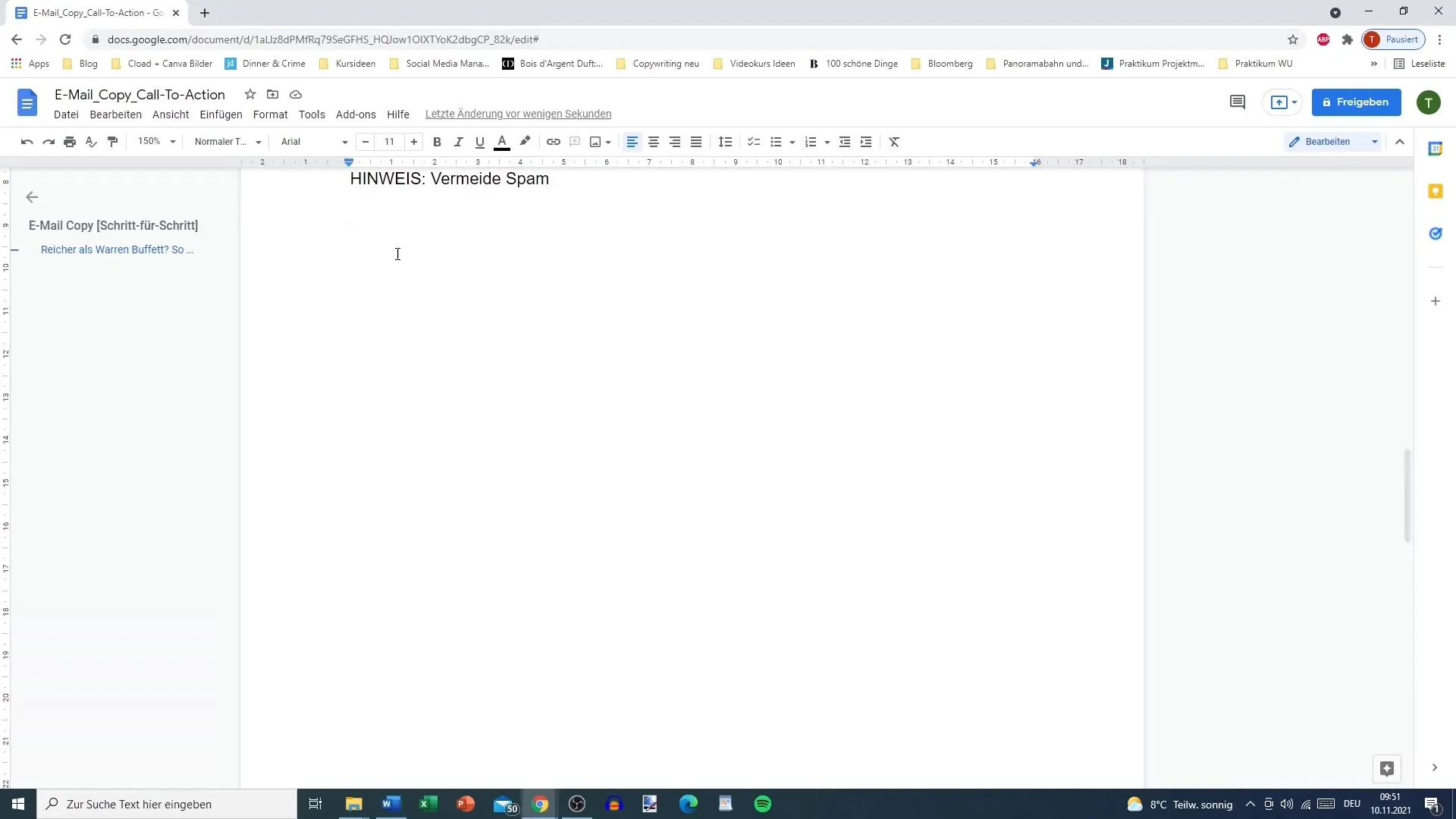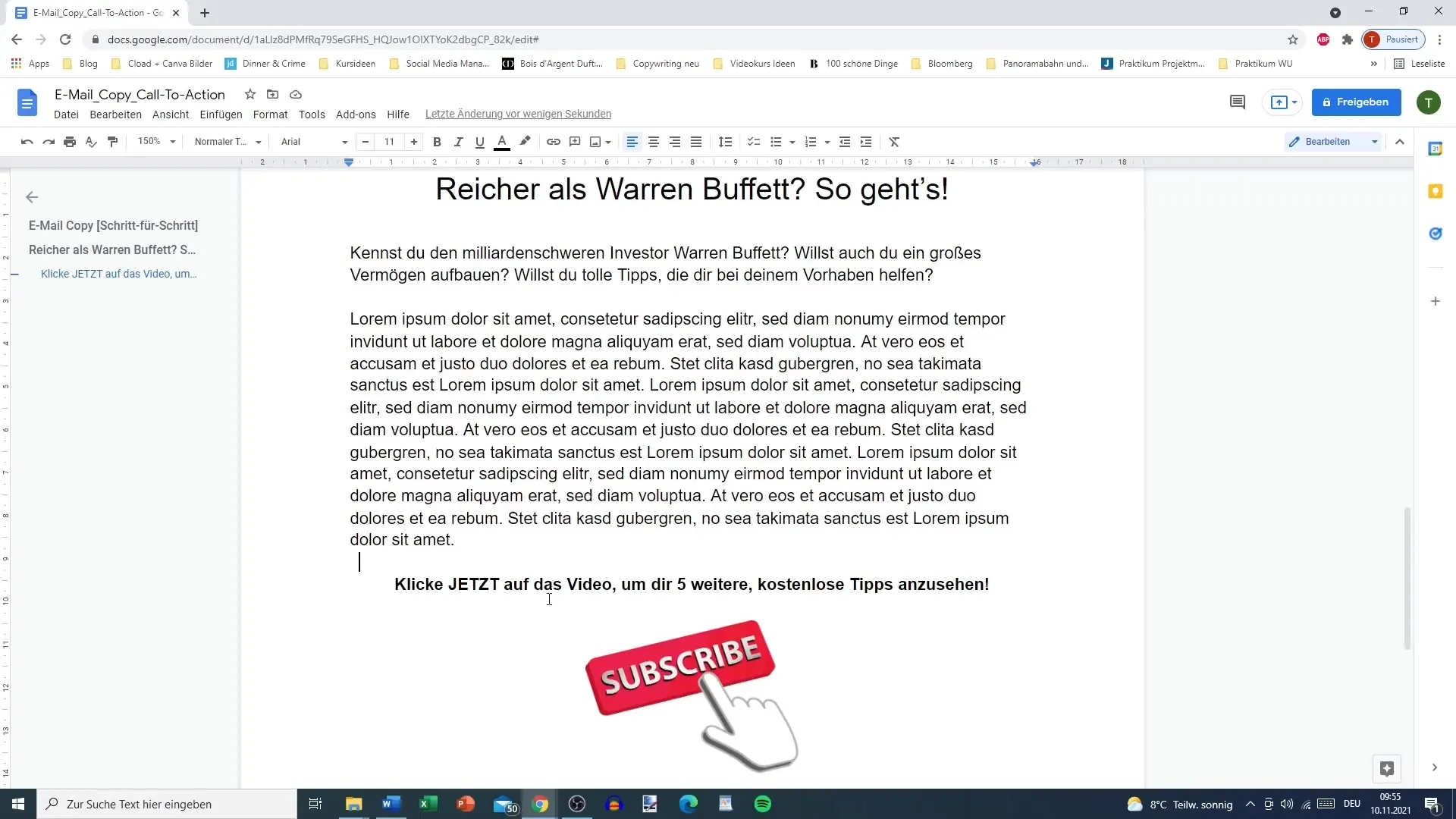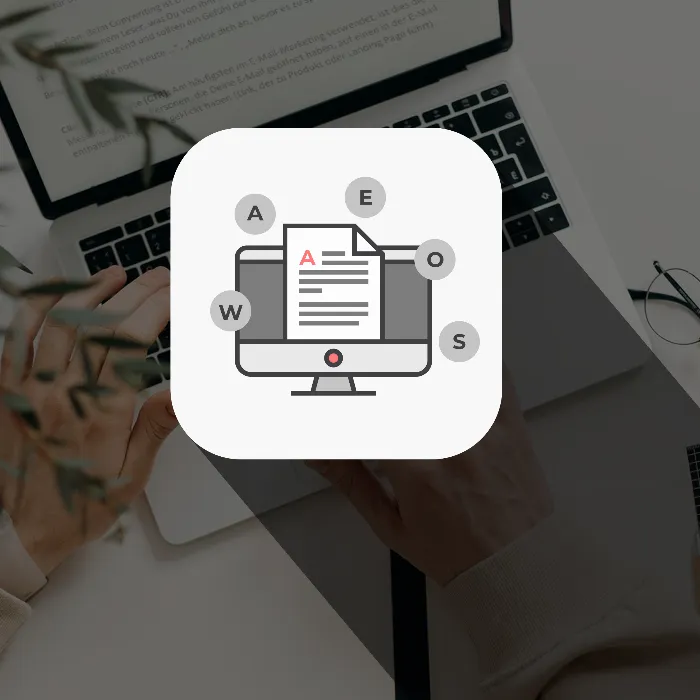Emails are still one of the central tools in online marketing. An essential element that often determines the success of an email is the Call-to-Action (CTA). It is more than just a button - it's about the opportunity to prompt your readers to take action. The right address and wording of your CTA can make the difference between an ignored message and successful engagement.
Key insights
- The Call-to-Action clearly shows readers what to do next.
- An appealing and relevant subject line attracts readers' attention.
- The CTA should be consistent, concrete, and motivating.
Step-by-Step Guide
1. Understand the Basics of Call-to-Action
A Call-to-Action is a direct call to readers to perform a specific action. It can be used in emails as well as on landing pages. Despite the different media formats, the basic functionality of the CTA remains the same: it is meant to encourage the reader to click on a link or button.

2. Choose the Right Platform
Email programs like MailChimp or others offer pre-designed buttons for Calls-to-Action. You have the option to customize these buttons according to your preferences to make them visually stand out. This increases the likelihood that readers will click on them.
3. Formulate a Compelling CTA
The wording of your Call-to-Action is crucial. Instead of simply writing "Click here," you should make a clear and specific suggestion. For example: "Click on the link now to see five free tips." This wording not only informs about the action but also provides an incentive for what the reader will get in return.
4. Link to Valuable Content
Make sure the link behind your Call-to-Action leads to high-quality and relevant content. This could be a video, a guide, or other useful information. The more value you offer, the higher the chance that readers will follow your call.
5. Contextualize the CTA
The Call-to-Action can be contextualized by the contents of the email. If the main text of your email contains tips to help readers, then the CTA could be: "Click on the video now and discover five more free tips!" This reinforces the connection between the content and the CTA.

6. Maintain Consistency Between Subject and Body
The subject line of your email should be consistent with your Call-to-Action. For example, if your subject promises how to become as rich as Warren Buffett, then your CTA should use a similar language. This helps meet the readers' expectations and supports a higher click-through rate.
7. Test Different Variations
It is important to test different variations of your Call-to-Actions to find out which works best. You can conduct A/B tests to see how well different wording or designs resonate with your target audience. This way, you can continuously optimize your CTA and tailor it to your readers' preferences.
Summary
In conclusion, the Call-to-Action in emails is a key element for the success of your communication strategy. With clear wordings, relevant content, and a consistent approach, you have the opportunity to effectively motivate your readers to take the desired actions.
Frequently Asked Questions
What is a Call-to-Action in emails?A Call-to-Action is a call to the reader to perform a specific action, such as clicking on a link or button.
How do I formulate an effective Call-to-Action?An effective CTA is clear, concrete, and communicates the benefit that the reader will receive by clicking.
Why is consistency between subject and body important?Consistency helps meet the readers' expectations and increases the likelihood of an action.
How can I measure the success of my CTAs?You can conduct A/B tests to test different CTA variations and evaluate their performance.
What should a CTA in an email include?A CTA should include a clear call to action, an attractive benefit, and a clear link or button.


